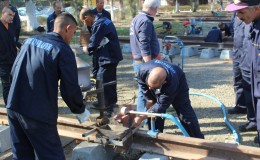Can Art and Music Heal the Dead and Inspire the Living?
Throughout human history, art and music have served as profound tools for emotional and spiritual transformation. These creative expressions not only reflect cultural values but also possess a unique capacity to heal, console, and inspire. From ancient rituals to modern therapeutic practices, the potential of art and music to bridge the realms of life and death continues to fascinate scholars, practitioners, and individuals seeking meaning beyond mortality.
Contents
- 1. Introduction: The Power of Art and Music in Healing and Inspiration
- 2. Theoretical Foundations: How Art and Music Influence the Human Spirit
- 3. Art and Music as Instruments for Healing the Dead and Comforting the Living
- 4. The Myth of Orpheus: Ancient Stories of Art’s Power to Bridge Life and Death
- 5. Modern Reflections: «Rise of Orpheus» and the Revival of Artistic Healing
- 6. Non-Obvious Depth: The Intersection of Art, Spirituality, and Infinity
- 7. Critical Perspectives: Limitations and Ethical Considerations of Art in Healing
- 8. Conclusion: Synthesizing Art and Music’s Role in Bridging Life and Death
1. Introduction: The Power of Art and Music in Healing and Inspiration
a. Defining the concepts of healing and inspiration through art and music
Healing through art and music encompasses processes that facilitate emotional release, foster spiritual connection, and help individuals cope with grief or trauma. Inspiration, on the other hand, refers to the uplifting and motivating effect that creative works can have on the human spirit—encouraging hope, resilience, and a sense of transcendence. Together, these concepts highlight the transformative power of creative expression in navigating life’s profound challenges.
b. Historical perspectives on art and music as tools for emotional and spiritual transformation
Ancient civilizations, such as the Greeks, Egyptians, and Chinese, integrated art and music into their spiritual and funerary rituals. For instance, the Greek myth of Orpheus illustrates music’s divine influence, believed to sway gods and spirits alike. Medieval funeral chants and indigenous rituals worldwide have employed art and music to honor the dead and seek spiritual guidance. These practices underscore a long-standing recognition of creative expressions as bridges between mortal life and the divine or afterlife.
c. The relevance of these concepts in contemporary society
Today, art and music remain vital in therapeutic settings, such as music therapy for trauma survivors or art therapy for those grieving loss. Society continues to seek solace in memorial concerts, commemorative artworks, and digital memorials, demonstrating that creative expression sustains emotional resilience and collective memory. As research confirms the neuropsychological benefits of engaging with art, their role in healing and inspiration is more relevant than ever.
2. Theoretical Foundations: How Art and Music Influence the Human Spirit
a. Psychological mechanisms: emotional release, catharsis, and memory activation
Research indicates that engaging with art and music activates neural pathways associated with emotion regulation, memory, and reward. For example, listening to mournful melodies can evoke catharsis, enabling individuals to process grief healthily. Similarly, creating art allows for emotional release, reducing anxiety and fostering a sense of closure. Studies in neuropsychology reveal that these activities stimulate the limbic system, the brain’s emotional core, facilitating healing.
b. Cultural and spiritual dimensions: art as a conduit to the divine and the afterlife
Across cultures, art has been deemed a sacred language that connects humans with divine forces or the afterlife. For instance, Egyptian tomb paintings illustrate beliefs in eternal life, while Tibetan thangkas serve as meditative tools guiding spirits beyond death. These symbols and motifs serve as spiritual bridges, affirming art’s role as a conduit between mortal existence and higher realms.
c. The role of symbolism and patterns: from ancient motifs to modern interpretations
Patterns such as the Greek meander symbolize eternity and unity, illustrating how geometric motifs embed profound spiritual meanings. In modern times, abstract art and sacred geometry continue to evoke notions of infinity and interconnectedness, reinforcing the idea that certain symbols can facilitate healing by resonating with our subconscious and spiritual instincts.
3. Art and Music as Instruments for Healing the Dead and Comforting the Living
a. Ritualistic uses of art and music in funerary and memorial practices
Many cultures employ ritualistic art and music to honor the deceased and aid their journey into the afterlife. Examples include the elaborate funerary masks of ancient Egypt, which serve as protective symbols, or the singing of mourning songs in indigenous communities that facilitate communal grief. These practices affirm art’s role in providing spiritual comfort and continuity beyond death.
b. Therapeutic applications: music therapy, art therapy, and grief processing
Modern therapeutic modalities harness art and music to process grief and trauma. Music therapy, for instance, uses songwriting and improvisation to help patients express suppressed emotions, while art therapy employs visual creation to externalize feelings. Evidence from clinical studies shows that such interventions significantly reduce symptoms of depression and anxiety associated with loss.
c. Case studies illustrating healing processes through creative expressions
| Case Study | Method | Outcome |
|---|---|---|
| Grief Support Group | Art therapy sessions focusing on memory collage | Enhanced emotional expression and community bonding |
| Hospital Music Program | Live performances combined with guided listening | Reduced anxiety and improved patient mood |
4. The Myth of Orpheus: Ancient Stories of Art’s Power to Bridge Life and Death
a. The legend of Orpheus and Eurydice: music’s ability to influence the divine and the dead
In Greek mythology, Orpheus, famed for his divine musical talent, ventures into the underworld to retrieve Eurydice. His enchanting music persuades Hades and Persephone to allow her return, on the condition that he not look back until reaching the surface. Tragically, he does, losing her forever. This myth exemplifies music’s mystical power to influence divine realms and offers hope that art can transcend mortality.
b. Symbolism of the lyre: sacred instrument, divine connection, and eternal harmony
The lyre, associated with Apollo and Orpheus, symbolizes harmony, divine order, and the eternal. Its strings are often depicted as resonating with cosmic principles, illustrating how music serves as a bridge between humans and the divine. The myth emphasizes that art embodies an eternal harmony capable of touching the divine and inspiring hope beyond death.
c. Lessons from the myth: art’s potential to transcend mortality and inspire hope
« Art, like Orpheus’s music, can transcend mortality, offering hope that the divine and the eternal are accessible through creative expression. »
This myth continues to inspire modern artists and thinkers, reinforcing the idea that art possesses a timeless, transcendent quality capable of connecting us with higher ideals and eternal truths.
5. Modern Reflections: «Rise of Orpheus» and the Revival of Artistic Healing
a. How contemporary works interpret Orpheus’s story to explore art’s healing power
Contemporary artists and filmmakers often revisit the Orpheus myth to explore themes of loss, redemption, and the healing potential of art. For instance, modern adaptations emphasize music’s role in facilitating emotional catharsis, and some experimental projects, like rise of orpheus opacity bug 🔥, exemplify how mythic narratives can inspire innovations in artistic therapy.
b. The role of music and art in memorials, remembrance, and collective grief
Public memorials, concerts, and digital tributes utilize art and music to foster collective mourning and remembrance. These practices serve as communal healing processes, reinforcing social bonds and providing space for shared grief, echoing ancient rituals adapted to modern contexts.
c. Innovations in artistic expressions inspired by ancient myths to heal and inspire
Innovations include immersive art installations, virtual reality memorials, and interactive music compositions. These new forms harness technology to deepen emotional impact, bridging the ancient symbolism of myth with cutting-edge therapeutic techniques, demonstrating that art’s healing power remains adaptable and profound.
6. Non-Obvious Depth: The Intersection of Art, Spirituality, and Infinity
a. Exploring Greek meander patterns: symbols of eternity and unity in art
Greek meander patterns, also known as key motifs, symbolize infinity and unity. Their continuous, unbroken lines represent eternal cycles—life, death, rebirth—and are found in ancient pottery, mosaics, and architecture. Such symbols serve as visual anchors for spiritual beliefs about continuity beyond mortality.
b. The philosophical implications: can art truly heal the dead, or does it merely console the living?
This question invites reflection on whether art has an intrinsic power to affect the afterlife or if its role is primarily to help the living cope with loss. Philosophically, many argue that art’s primary function is to provide solace and meaning, creating a bridge of understanding and hope that transcends physical death.
c. The influence of sacred geometry and symbolism in creating therapeutic and inspiring art
Sacred geometry—patterns like the Flower of Life or the Golden Ratio—embeds mathematical principles believed to embody universal harmony. Incorporating these motifs in art can evoke feelings of wholeness and spiritual resonance, supporting healing and inspiration by aligning with our innate sense of order and infinity.
7. Critical Perspectives: Limitations and Ethical Considerations of Art in Healing
a. When art may hinder rather than help: potential for emotional overload or cultural insensitivity
While art can be therapeutic, poorly managed interventions may overwhelm individuals or inadvertently reinforce cultural insensitivities. For example, triggering imagery in memorial art might exacerbate grief if not carefully contextualized. Therapists and artists must consider individual backgrounds and readiness.
b. Ethical responsibilities of artists and therapists in using art for healing
Professionals must ensure that creative expressions serve the client’s best interests, respecting cultural, spiritual, and emotional boundaries. Informed consent, cultural sensitivity, and awareness of potential triggers are essential ethical practices in therapeutic art.
c. The importance of context, intention, and interpretation in therapeutic art practices
The impact of





